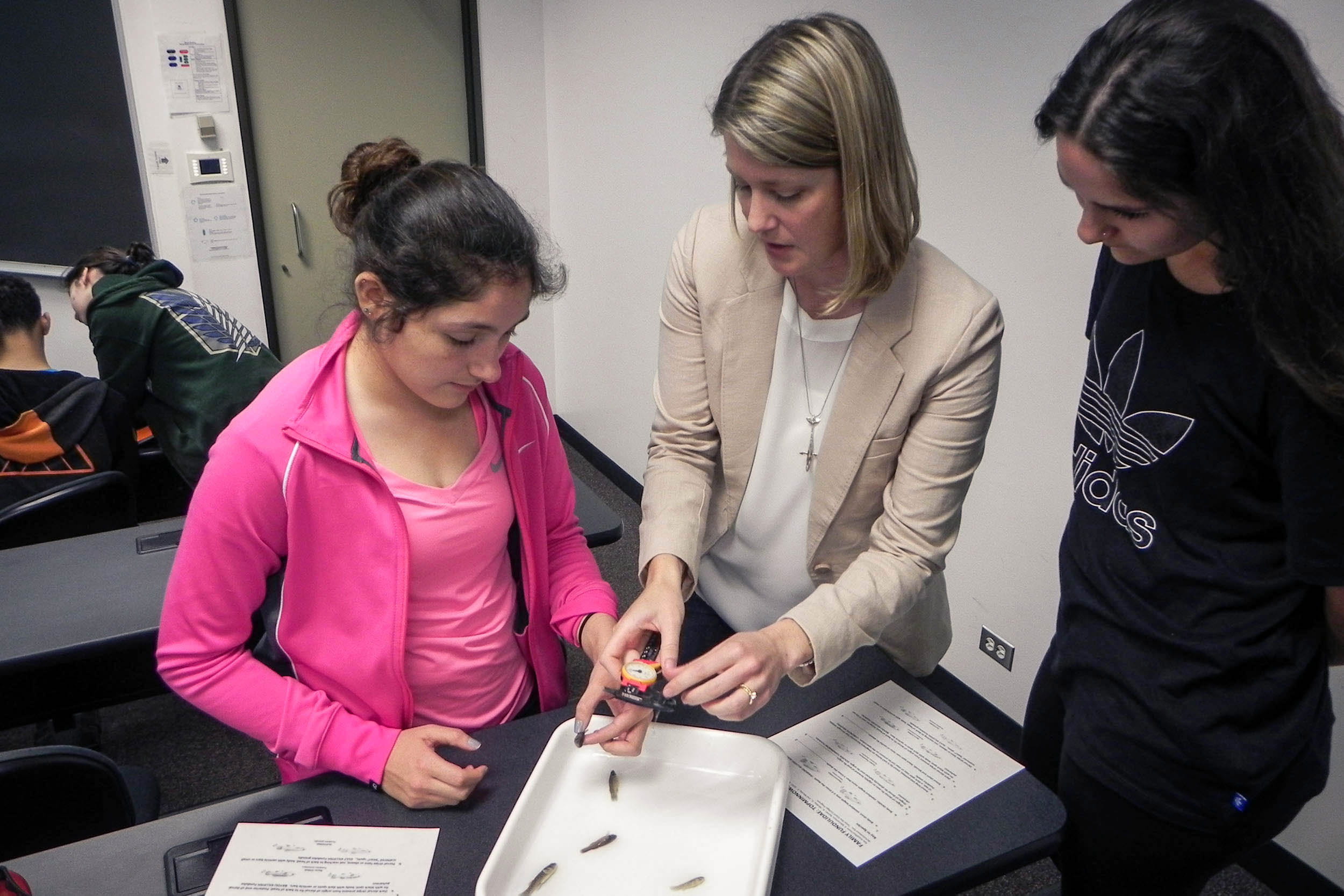
Aquatics

Abiotic Factors
Learning Objectives
- Know the processes and phases for each part of the water cycle and understand the water cycle's role in soil nutrient erosion, salinization of agricultural lands, and climatic influences.
- Understand the concept and components of a watershed and be able to identify stream orders and watershed boundaries. Know the features of a healthy watershed and an unhealthy watershed.
- Know how to perform and interpret chemical water quality tests and understand why aquatic organisms and water quality are affected by the physical, chemical, and biological conditions of the water.
Biotic Factors
Learning Objectives
- Understand the dependence of all organisms on one another and how energy and matter flow within an aquatic ecosystem.
- Understand the concept of carrying capacity for a given aquatic ecosystem, and be able to discuss how competing water usage may affect the ability of the system to sustain wildlife, forestry and anthropogenic needs.
- Identify common, rare, threatened and endangered aquatic species as well as Aquatic Nuisance Species (ANS) through the use of a key.
- Know how to perform biological water quality monitoring tests and understand why these tests are used to assess and manage aquatic environments.
Aquatic Environments
Learning Objectives
- Identify aquatic and wetland environments based on their physical, chemical and biological characteristics.
- Know characteristics of different types of aquifers, and understand historical trends and threats to groundwater quantity and quality.
- Understand societal benefits and ecological functions of wetlands.
- Understand the functions and values of riparian zones and be able to identify riparian zone areas.
Water Protections and Conservation
Learning Objectives
- Understand how education programs and enforcement agencies are working together to protect aquatic habitats and preventing those who use our waterways from inadvertently transporting ANS from one river to another.
- Interpret major provincial and/or federal laws and methods used to protect water quality (i.e., surface and ground water). Utilize this information to propose management decisions that would improve the quality of water in a given situation.
- Be familiar with the Federal, Provincial and state agencies that provide oversight of water resources, and understand that Geographic Information Systems (GIS) is a useful and important tool in the management of water resources.
- Identify global and local sources of point and non-point source pollution and be able to discuss methods to reduce point and non-point source pollution.
- Understand the interaction of competing uses of water for water supply, hydropower, navigation, wildlife, recreation, waste assimilation, irrigation, and industry.
- Know the meaning of water conservation, and understand why it is important every time you turn on a faucet.
Recommended Resources
- Clean Water Act
- Consider the Source: A Pocket Guide to Protecting Your Drinking Water
- Estimated Use of Water in the United States in 2015
- Nutrients in Streams - Trinity River Basin
- Galveston Bay Report Card
- Safe Drinking Water Act
- Sole Source Aquifer
- Underground Injection Control
- Water Quality Standards Regulations: Texas
- Wellhead Protection
- What are Aquatic Nuisance Species (ANS)?






